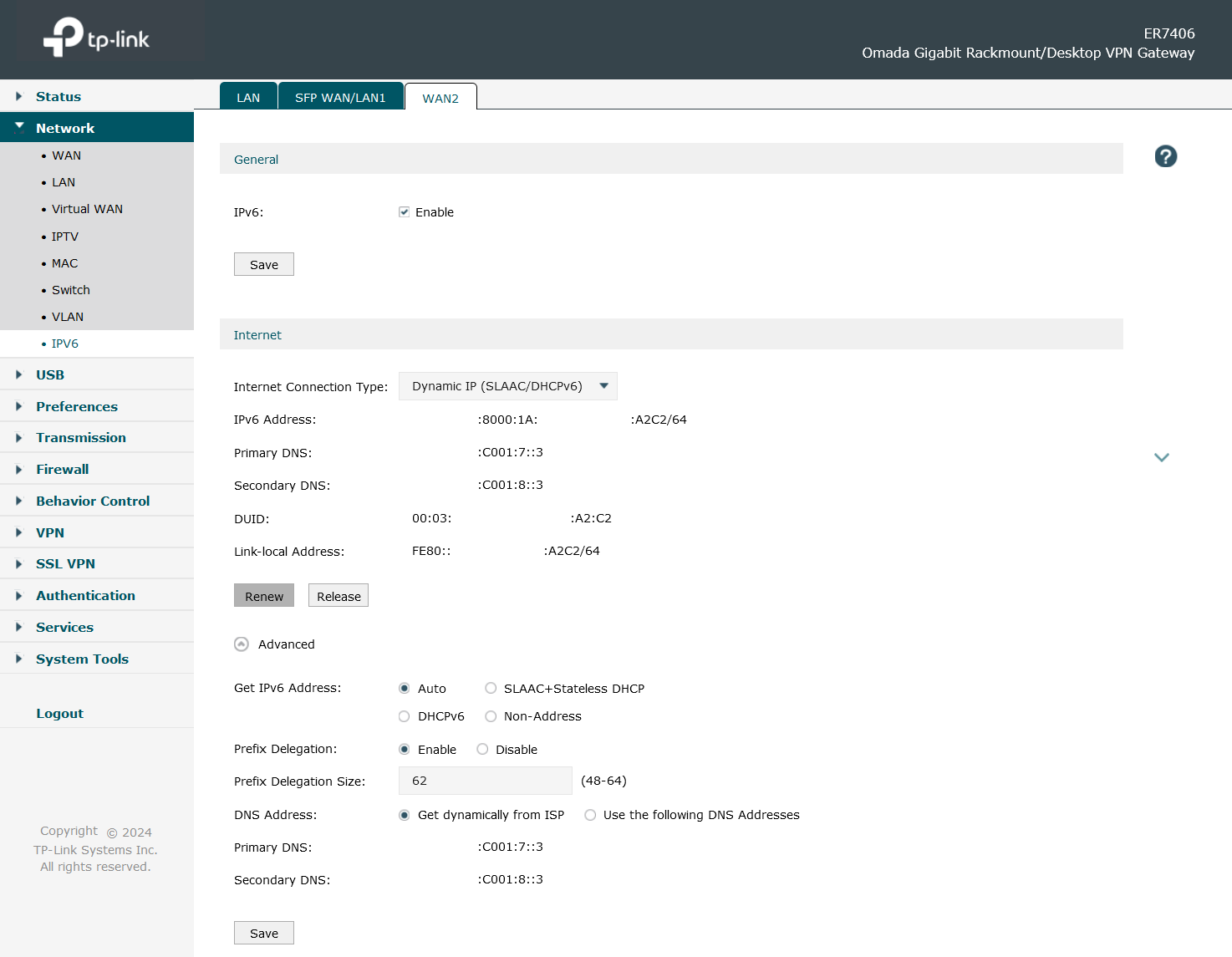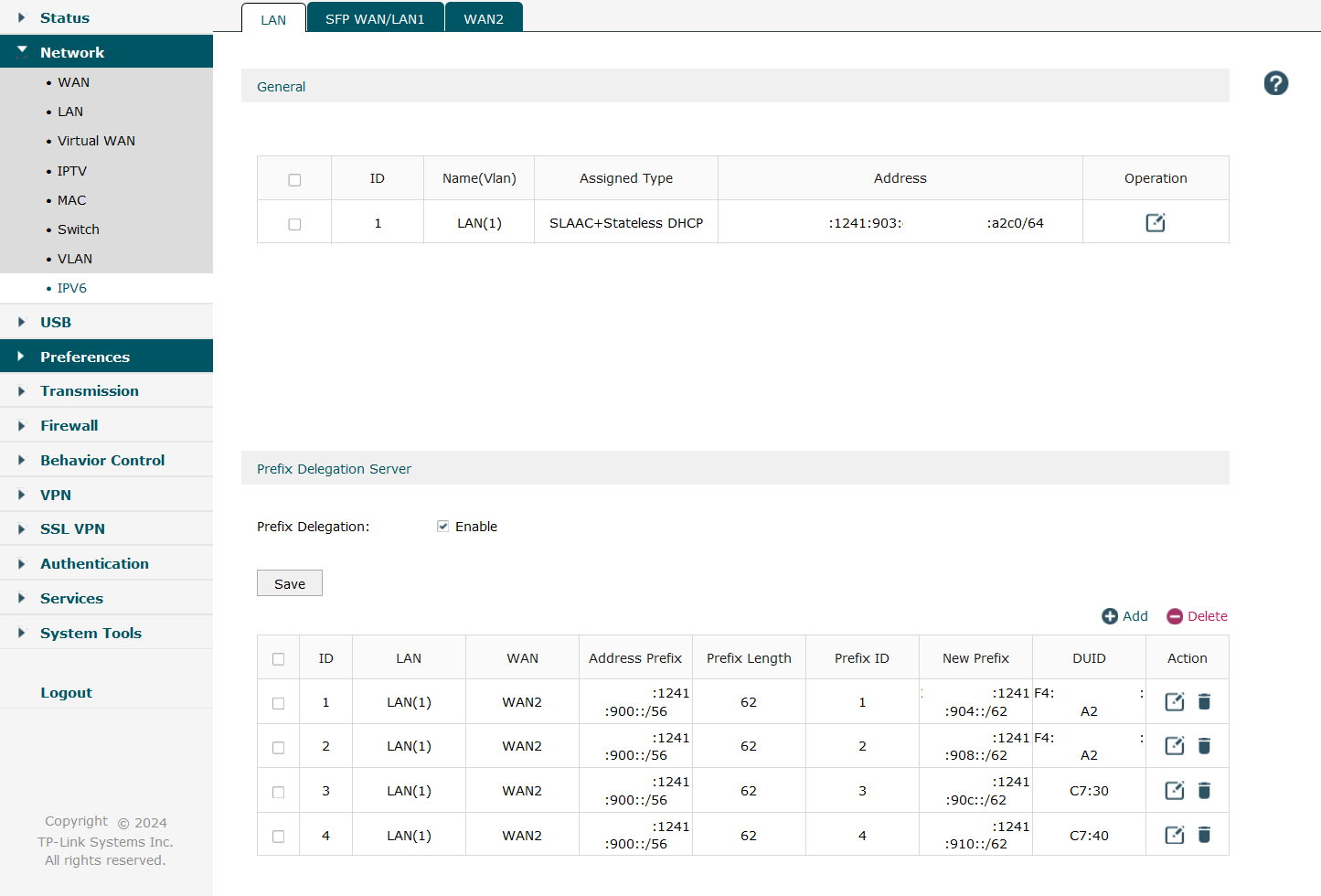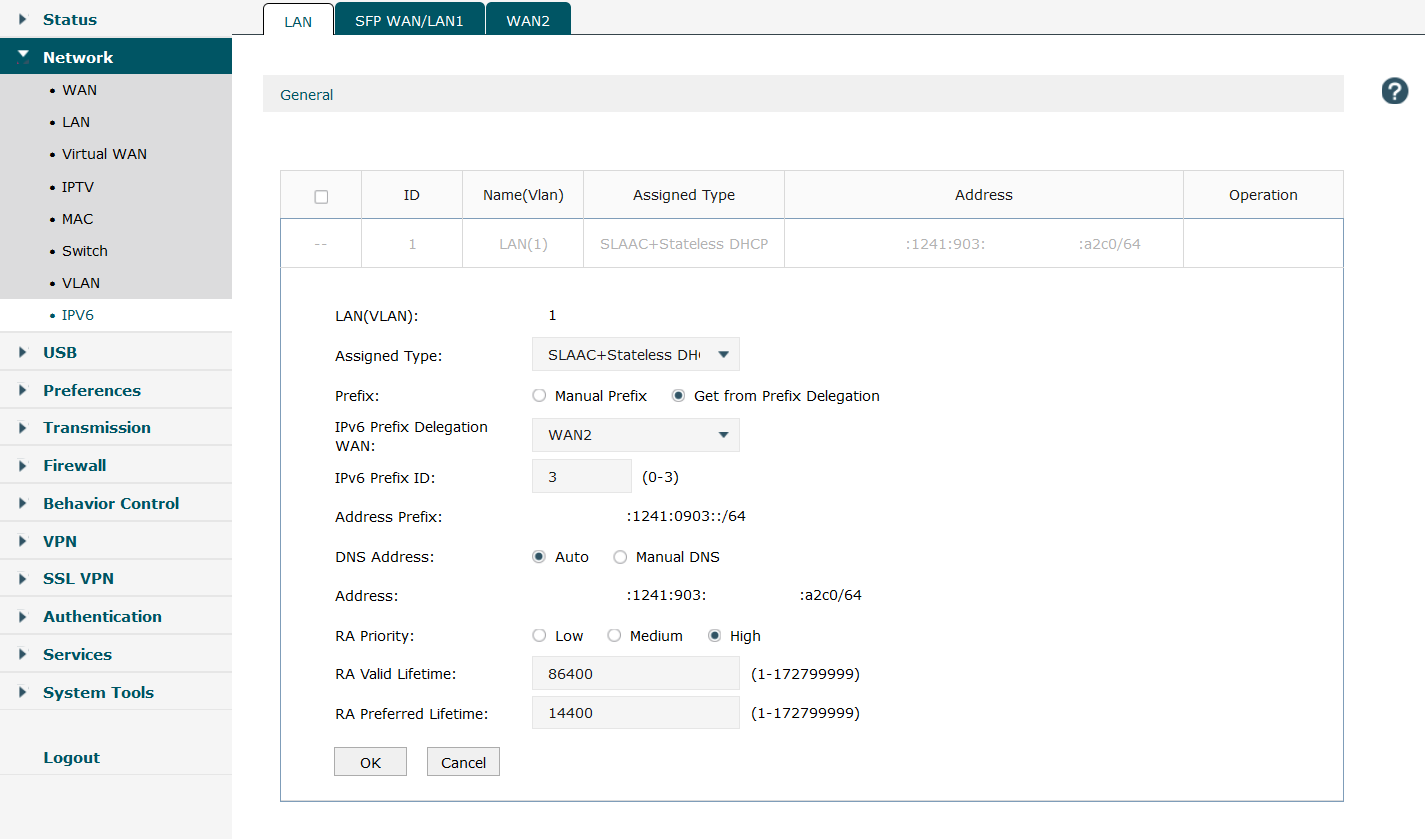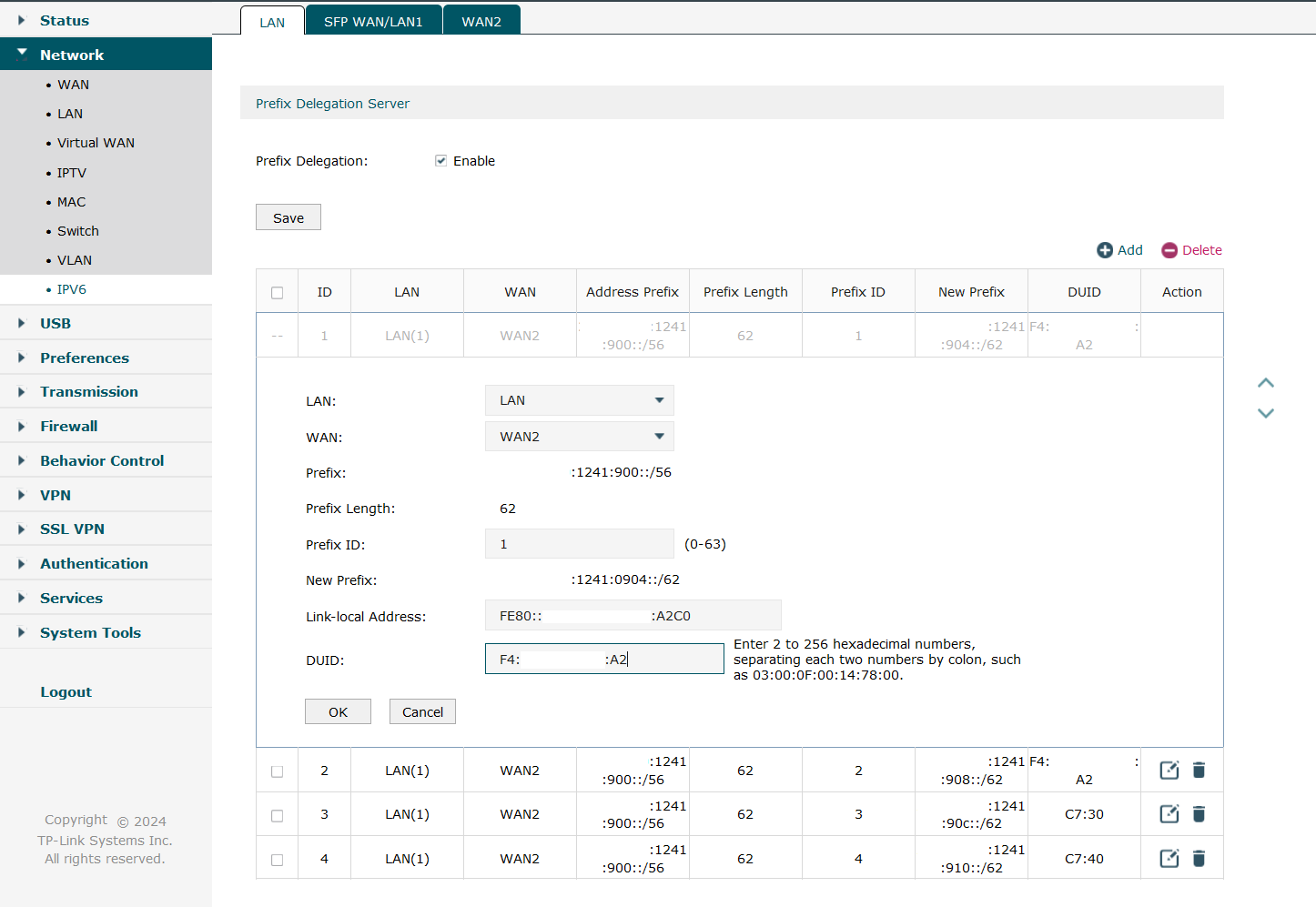Prefix Delegation Server configuration
I am trying to understand how to properly configure the IPv6 Prefix Delegation Server in my ER7406 so that I can have a multi-layered tree-style internal network.
My Configuration
My ISP offers IPv6 support and a /56 delegated prefix. I wish to split this into subnets and offer smaller prefixes to child routers connected to my LAN. What is the supported configuration for this scenario? Right now I have set things up thusly:
WAN:
Type: Dynamic IP (SLAAC+Stateless DHCP)
IPv6 Address: 2001:db8:8000:1A:<SLAAC-based stuffix>/64
Advanced:
Prefix Delegation: Enable
Prefix Delegation Size: 62
LAN:
Type: SLAAC+Stateless DHCP
Prefix: Get from Prefix Delegation
IPv6 Prefix ID (0-3): 1
Address Prefix: 2001:db8:1241:0901::/64
Prefix Delegation Server:
Prefix Delegation: Enable
<multiple entries allowed>
Prefix: 2001:db8:1241:0900::/56
Prefix Length: 62
Prefix ID (0-63): 1
New Prefix: 2001:db8:1241:0904::/62
Link-local Address: FE80::<EUI>
DUID: <a couple hex digits>
<another entry>
Prefix: 2001:db8:1241:0900::/56
Prefix Length: 62
Prefix ID (0-63): 2
New Prefix: 2001:db8:1241:0908::/62
etc.
Questions
LAN configuration is based on the prefix size requested, not the prefix size given?
I requested a /62, and the LAN configuration page reflects that by allowing me 64-62=2 bits for choosing an ID (0-3). But the actual prefix is /56, not /62.
Only one place to specify prefix size?
The only place to specify the size of the delegated prefix is in the WAN configuration page. This is the size of the prefix that is requested from the ISP. Why can I not also specify a separate prefix size in the Prefix Delegation Server, so that I can control the size of the subnets distinctly from the size of the prefix that the subnets will be carved out from? Right now I am lucky in that the ISP is (correctly) treating my requested size as a hint and choosing to give me something larger. If they gave me exactly what I asked for, I would not have any way to split it up into subnets when configuring the Prefix Delegation Server.
Overlap between LAN and Delegation Server?
If I configure the prefix hint on the WAN page to be /56 to match what the ISP offers, then on the LAN page my only option for the IPv6 Prefix ID is 0. But if I then also enable the prefix delegation server and configure a delegated prefix, my only option for delegated subnets is exactly the size that I requested in the WAN page, namely /56. That means the Prefix Delegation Server is offering the entire delegated prefix to a child router, which leaves none of the subnet available for the LAN itself. Is this correct? How would there not be IP address conflicts between the LAN and the child router?
When adding an entry to the Prefix Delegation Server, it allows me to set a Prefix ID for the new prefix, and it correctly calculates the difference between the size hint and the actual size so it knows that I have six bits available for a subnet ID (0-63). So I do not understand why there is no way to control the subnet size other than changing the WAN size hint.
Link-local Address?
When adding an entry to the Prefix Delegation Server, it has a field for me to enter the link-local address. What should this field be? I expect it should be the link-local address of the LAN so it can serve as the default gateway for the child router, but then why do I need to type it in manually? Why is it not auto-populated, or even just inserted automatically like the calculated New Prefix and other fields that are dictated by the router itself? Should I be leaving the field blank? Should I be using the string "::" or some other placeholder to trigger an automatic value? Should it be some other value entirely?
DUID?
When adding an entry to the Prefix Delegation Server, it has a field for a DUID. Is this a unique identifier for the entry, or is it supposed to be the DUID of a child router that comes in a solicitation?




